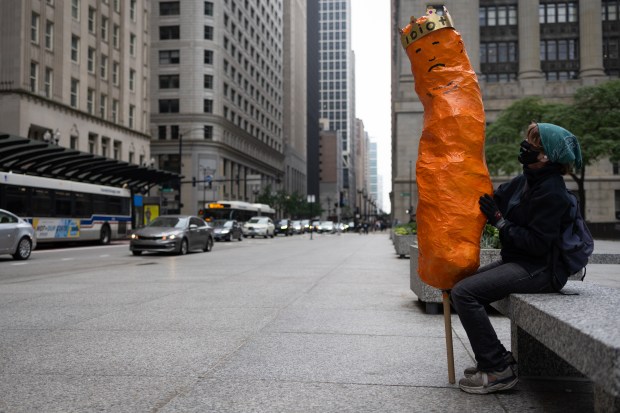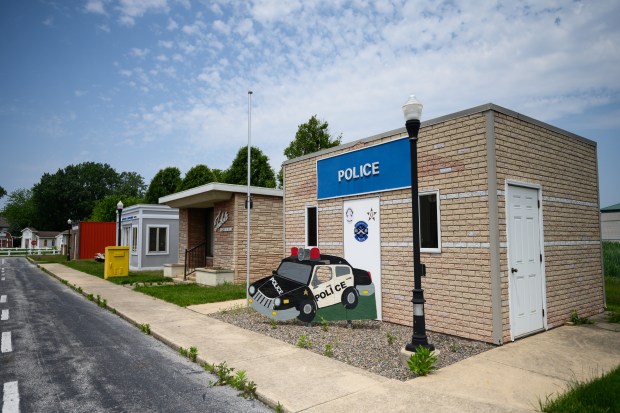Indian Prairie School District 204 is looking to add four new high school elective classes to its course catalog for the 2025-26 school year.
School officials presented the proposed new classes to the district’s Board of Education at a meeting on Monday, with the board set to vote on the new classes at its next meeting in November. The proposed classes include Criminal Law, World History through Media, Sports Medicine 2 and Adaptive Art.
The proposed Criminal Law course would be a one-semester elective for students who want to learn about the criminal justice system from arrest to prison, according to District 204 Director of Core Curriculum Michael Purcell’s presentation.
He said the class is expected to have broad appeal for high school students, as some may take the course just because they are looking for another social studies class while others may take the class because they are interested in pursuing a career in either legal studies or law enforcement.
The four units of the class would cover crime scenes and investigation, criminal trials, criminal justice and prison plus a research-based project proposing possible solutions for reform, Purcell’s presentation showed.
According to the course description shown in the presentation, the class would also include a mock trial and guest appearances by legal experts.
Students must pass ninth grade Human Geography before they could take this class, Purcell said.
World History through Media, another proposed single-semester elective course, would explore the past through various art forms, including film, TV, graphic novels and other media, according to Purcell’s presentation.
“The media is sort of the hook, but the history is the meat,” he said.
The class, while it could be taken any time after completing Human Geography, would likely fit for most students who take it between that ninth-grade course and U.S. History, which is a junior level course that some students take during their sophomore year, Purcell said.
“This class will be able to really home in on those historical skills, that claim and evidence and reasoning skills, and build up that skill bag for them to be more ready for that U.S. History course and then the government class that comes behind it,” he said.
The class will be project-centered, with students gathering evidence and studying multiple sources of information, according to the course’s description in the presentation.
Through media, students in the class would see the world through different lenses, as they would explore a variety of time periods and groups, Purcell said. Media literacy would also be a focus of the class, so students would learn to think critically about how different things are portrayed in the media they study, he said.
According to the presentation, topics to be covered in the class’ units would include: “Why does historical accuracy matter?” “What happens when cultures collide?” “Does change always mean progress?” and “What makes someone a good or bad person?”
The proposed Sports Medicine 2 course is a continuation of the current Sports Medicine course, which has seen higher enrollment each year and has doubled in enrollment over the past five years, according to District 204 Director of K-12 Elective Curriculum Grant Sahr.
He said it was this growing enrollment mixed with the growing workforce shortages in allied health care professions that led district staff to develop and propose this new class.
While Sports Medicine 2 would expand upon the knowledge and skills taught in Sports Medicine 1, it was also designed to be an exploration of the various careers within sports medicine, Sahr said.
According to the course description, students would learn how these medical specialists work to prevent, evaluate, treat and rehabilitate athletic injuries.
Students would also learn about emergency medical scenarios, environmental health issues and emergencies, therapeutic interventions and more, the course description said.
The last course proposed to be introduced in the 2025-26 school year is the Peer Partners Adaptive Art Course. This course would be similar to existing Peer Partners courses, where students apply to partner with special education students in the class, Sahr said.
“The primary goal of this course is to provide opportunities for self-expression through artistic creation,” he said. “The instructors and students will work together to find the most effective and fulfilling processes in the art-making experience.”
The peer partner students, who will get to plan and instruct their partners throughout the course, would get to experience the teaching side of education and introduce them to the district’s Grow Your Own Teachers program, according to Sahr.
He said the course would be designed around the “seven elements of art,” which his presentation said are line, shape, pattern, form, color, texture and space.
Media to be created throughout the course may include drawing, painting, sculpture, printmaking, textiles, digital art and more, he said.
Another course, Construction 2, was also proposed at the meeting but will likely not be available for students to take until the 2026-27 school year, according to Director of Innovation Brian Giovanini.
He said the course is being proposed now so that the district has time to look for grants to fund the purchase of needed equipment and materials for the course.
In Construction 1, students build the outside of a house, so Construction 2 would be focused on building the inside, Giovanini said.
Through the course, students would gain practical experience in floor and wall finishes, electrical work, plumbing and trim carpentry, according to the course description.
Indian Prairie School District would not need to hire new teachers to accommodate the proposed new courses, district staff said.
rsmith@chicagotribune.com




